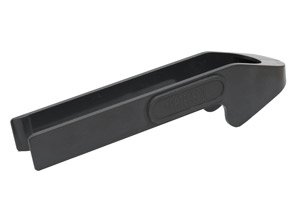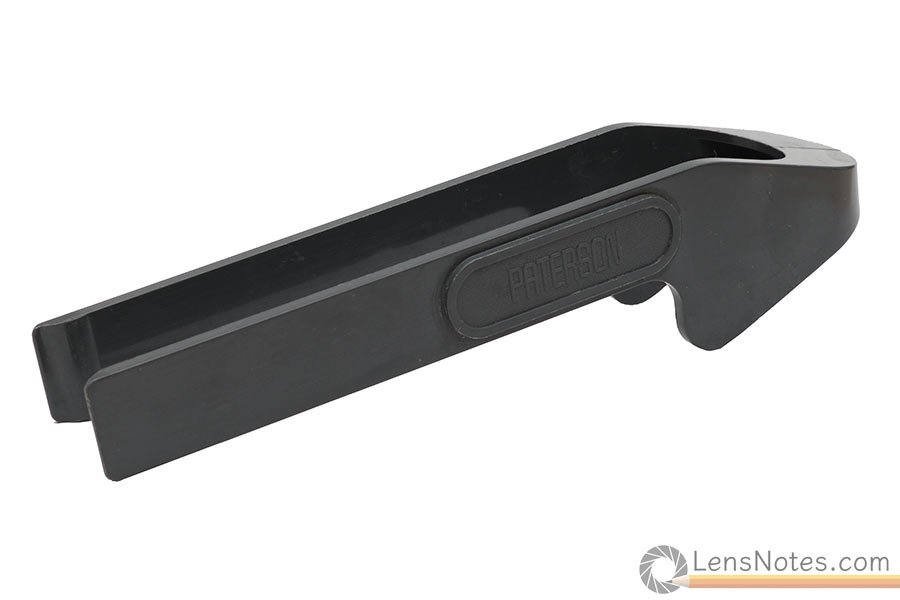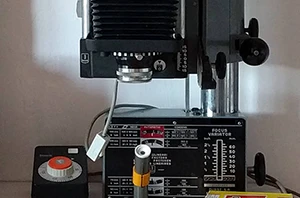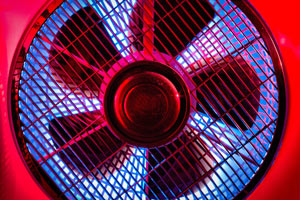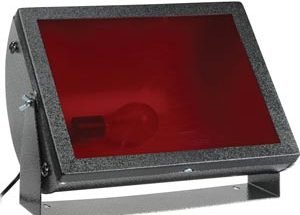What are print tongs?
Print tongs are a tool used for handling photographic paper while processing. As essential darkroom printing accessories, print tongs reduce or eliminate contact between skin and processing chemicals. Furthermore, print tongs help reduce cross contamination between the different chemical solutions, thus improving the effectiveness and reliability of your workflow.
Usually made out of plastic, metal or wood, print tongs are designed to minimise marks on the delicate emulsion surface of wet prints. Some stainless steel and wooden models come with textured rubber caps to increase grip.
How are print tongs used?
Using print tongs is an easy and intuitive process, but there are some tricks you best keep in mind. For starters, to get the most out the advantages that tongs provide, you need to have multiple pairs of them. Ideally, you will have a separate, labeled pair for each of the solutions your print has to go through – developer, stop bath, fixer, wash, hypo clearing agent and any toners or stabilizers. This is especially important with wooden tongs, as wood will absorb and retain a tiny amount of chemistry even after washing.
To prevent contamination, only dip the pair of tongs in it’s designated solution. As an example, let’s say we’re transferring a print from developer to stop bath. When transferring prints from one tray to the next, grab the sheet by the corner, as close to the edge as possible to make sure any marks the tong may leave are outside of the image area. Lift the print above the tray and wait a little for the bulk of the developer to drain back, thus minimizing carryover into the stop bath. Next, place the print in the stop bath tray, but resist the urge or submerging it with the developer tongs, as this will contaminate them and reduce the life of the developer. Let go of the print while the corner you’re holding is still in the air, and use the stop bath tongs to make sure the print is completely submerged.
Do you need print tongs?
Print tongs are inexpensive darkroom accessories that will help you keep chemistry off your hands, while simultaneously preventing cross contamination between the different solutions. If you are printing small to medium sized prints, tongs will allow you to go through the whole developing process without getting your hands wet.
On the other hand, if you are printing large sized prints like 16″x20″ and up, you might find tongs of limited use. It’s really a personal preference whether you use tongs in the darkroom, but it’s strongly recommended that you minimise your hands’ exposure to processing chemicals as much as possible.
What are print tong alternatives?
If you are unable to obtain dedicated print tongs, or find them uncomfortable for your workflow, there are a couple of other options you can try.
A word of caution: Do clearly label any household items you use for darkroom work, so that they don't make their way back into your kitchen and onto your table. This goes for any civilian tools (pitchers, boxes, bottles, jars etc.) that you may employ in the dakroom. As soon as you've used it for darkroom work, label it with a sharpie and stow it away. Do notify family members about household items you use in darkroom work and make sure they are aware of the labeling and storage systems you use. Mainstream darkroom chemistry is relatively safe and mild, but can still cause a fair bit of grief when mishandled.

Gloves
There are many reasons to use gloves in darkroom printing. If you find tongs fiddly, awkward the best thing to try is working with gloves. Even if you are using tongs, some chemicals will inevitably end up on your hands. If you are concerned about chemical exposure or have sensitive skin, gloves are a good idea in pretty much any darkroom process. However, there are some situation where gloves are indispensable.
Some types of printing paper are more delicate than others. Resin coated paper is rather tough, but pretty much all fiber-based papers are quite fragile when wet. Even if you normally work with tongs, you may find that they leave marks on the emulsion of that new box of paper. This may not be a big deal if you only handle prints by the edges and trim them after drying, but it can be an issue if you are printing full bleed and looking to exhibit an untrimmed print. Prints larger than 12″x16″ are also rather difficult to handle with tongs, and may crumple or tear.
If you are faced with these issues, the only way out is to use gloves and gently handle prints in and out of the developing trays. Depending on personal preference, you can go for disposable nitrile, vinyl or latex gloves, they will all do just fine in the mild developing chemicals. Do make sure any gloves you pick are powder-free to avoid smudges on your prints. Make a habit out of rinsing your hands between developing steps to avoid cross contamination of the chemicals.
To decrease the environmental impact of your darkroom work, you can also try reusable kitchen gloves. Naturally, they are thicker and thus provide less tactile feedback, but you may find this not to be an issue in your workflow. Do label them once you’ve used the pair with darkroom chemicals.
Food tongs
In theory, any food handling tong can work for darkroom printing work, although some work better than others. Salad tongs are not a good match for print handling due to the shape of the tips, but wooden toaster tongs can be a decent print tong substitute. If you are hitting the local big box store to look for print tong alternatives, look for pairs with flat or lightly textured ends that will grip but not abrade the prints.
Once again, to avoid nasty surprises, do clearly label any kitchen tools that you’ve repurposed for darkroom work. Also, keep in mind that wood, unlike plastic or steel, will retain chemistry, so it’s important to keep separate tongs for the different solutions and label them accordingly.
If you are just starting your darkroom printing journey, check out our Darkroom Printing Equipment Essentials buying guide for more tips and ideas!

